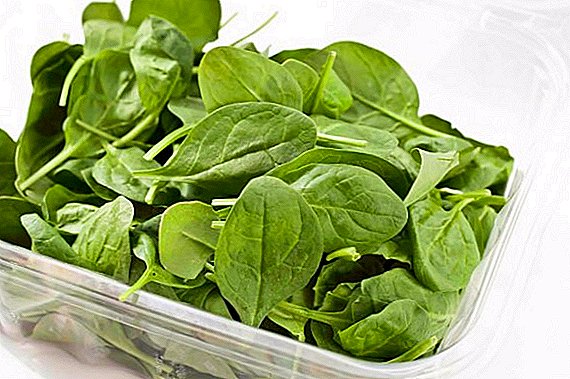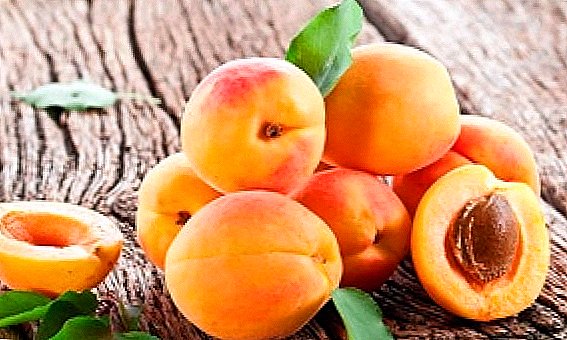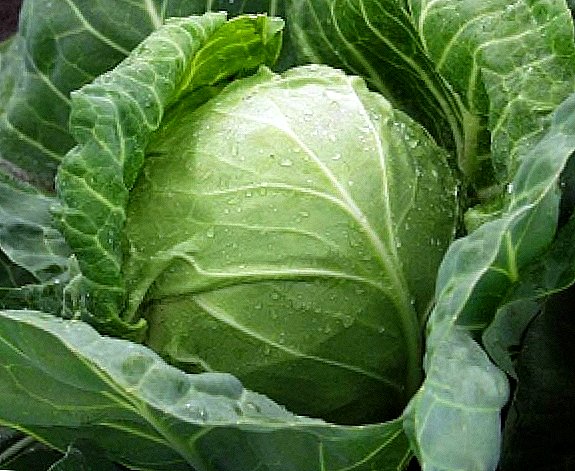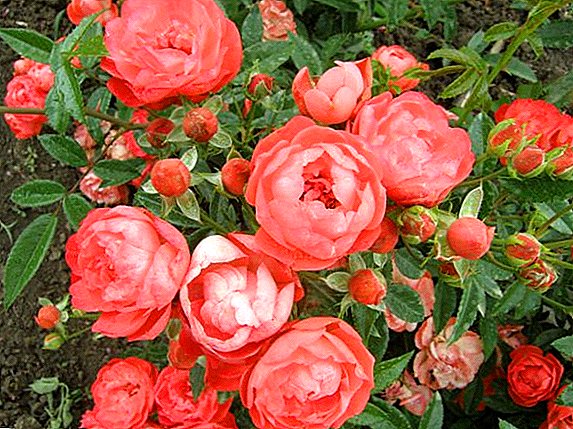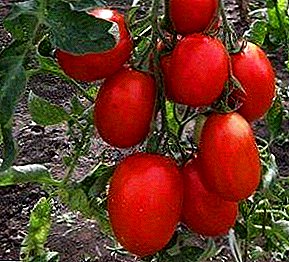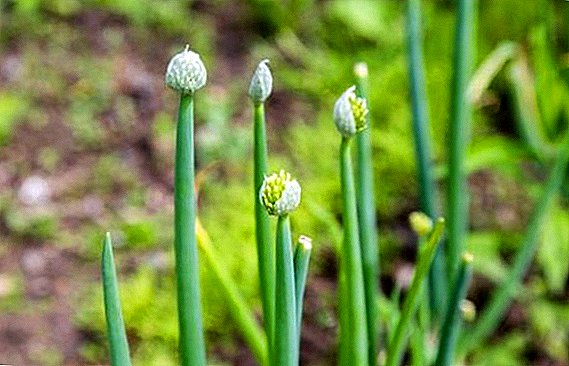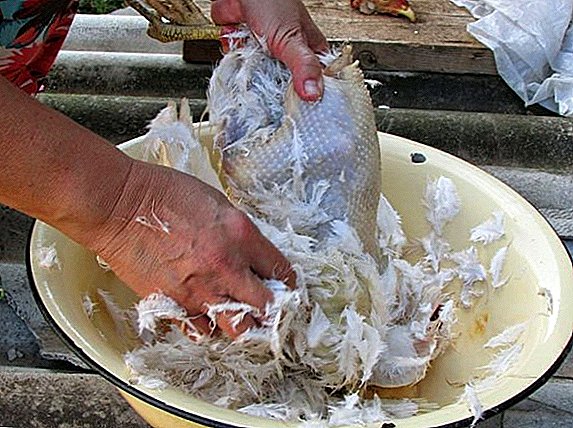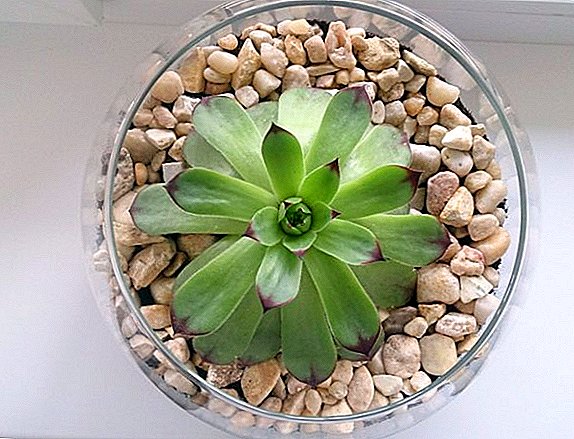 A sultry Mexican born, Echeveria, or Stone Rose, is a succulent plant of the Crassulaceae family and is a heat-loving plant.
A sultry Mexican born, Echeveria, or Stone Rose, is a succulent plant of the Crassulaceae family and is a heat-loving plant.
It grows well in home greenhouses, on window sills, used for decoration of florariums and stony gardens.
Unpretentious to the conditions, having a high decorative effect, Echeveria will not cause much trouble and will invariably please with its appearance.
Optimal conditions in the house for growing
As a representative of succulents, Echeveria - slow growing long-liver. For the successful growth and development of the plant it needs to create as close as possible to the natural conditions, especially since it is not difficult.
Did you know? The plant got its name from an artist from Mexico named Atanasio Eheverria Koda, who illustrated a book about the flora of his native country.
Lighting
The main condition for the well-being of Echeveria is adequate lighting. She loves sunny windowsills - southern, eastern or western. Direct sunshine she is not afraid, it does not require shading.  In the summer, it is very useful to arrange a stone rose "vacation" with relocation to the lawn, an open veranda or not a glazed balcony, while not forgetting to take care of protection from rain.
In the summer, it is very useful to arrange a stone rose "vacation" with relocation to the lawn, an open veranda or not a glazed balcony, while not forgetting to take care of protection from rain.
Did you know? Echeveria is known since ancient times, the signs connected with it speak about the protective abilities of a plant. Thus, the stone rose in the house protects it from evil spirits. If it grows on a sod roof, it diverts the wrath of the gods from the house in the form of lightning.In winter, not too much light will be flower in a short daylight hours.
Temperature
Comfortable temperature for a stone rose in the summer - 18-25 degrees. In winter, many succulents, and Echeveria are no exception, need a period of rest. At this time, it will be enough for her 10-15 degrees to provide decent conditions at this stage. The plant does not like drafts.
Important! Too warm winter air will indicate sluggish rosette and loose leaves of Echeveria.This principle cannot be applied to those species in which it is time for flowering in winter. They need to provide a bright warm place in the house on a permanent basis.

Peculiarities of home care
Echeveria is a very beautiful and unpretentious flower, caring for it is not difficult. Even a novice is able to provide her with a decent living at home.
Did you know? It is believed that Echeveria helps purify and disinfect air, and its infusion is used to treat boils and wounds.
Watering
The stone rose should be provided with regular watering, which, however, should not be abundant. It is advisable to wait for the drying of the top layer of soil in a pot to 3 centimeters deep.
In winter, watering is drastically reduced to once a month; this is all the more urgent the lower the temperature is.
Echeveria does not like water entering the outlet, so you need to know how to water it. Excessive moisture can begin the process of decay.
Water should be well defended and not be cold.
Important! There are types of Echeveria whose leaves are lowered. With such instances should be particularly careful. They are best watered using a pallet, draining excess moisture after saturating the soil with it.
Air humidity
Like other succulents, Echeveria requires dry air. She does not need spraying procedures, and even more so it is absolutely contraindicated for souls who will not bring any benefit, on the contrary, will harm and lead to deplorable and sometimes irreversible consequences.
Important! It is allowed to wipe the leaves with a soft cloth, which does not damage the wax coating, to remove dust and prevent parasites from damaging the echeveria.
Top dressing
When leaving the dormant phase in early spring, the stone rose should begin to feed. It is very important not to overfeed the plant, so as not to harm the delicate roots. Therefore, when using a special fertilizer for succulents, its concentration should be halved, diluting it with distilled water at room temperature.
In winter, the stone rose does not need dressing.
When and how to transfer
Echeveria is easily damaged, so the transplant should be done very carefully, avoid touching the leaves so as not to damage the wax layer. Young plants need annual habitat renewal, adults matured as needed.
Transplantation is carried out in the spring time, after leaving the resting stage. She will like the flat wide tank, equipped with good drainage:
- ceramic shards;
- expanded clay;
- pebbles.
Echeveria looks great next to other succulents - cacti, agave, airshyzoni, havortiya, kalanchoe, hatior, zigokaktus, bluff, sansevierie.Soil for stone rose should be loose, not enriched with nutrients, its basis can be a special mixture designed for succulents. In the ground is allowed to add:
- river sand;
- brick chips;
- fine crushed stone;
- charcoal that prevents root rot.
 The sequence of actions during transplantation:
The sequence of actions during transplantation:- not moistened earth ball out of the pot;
- gently tapping to separate delenki;
- clean the old soil as much as possible;
- check the root system for dead, rotted or otherwise worn out fragments, remove them;
- place the delenka in the capacity selected for it;
- do not water for another week, then gradually moisten with small portions.
Methods of reproduction at home
Echeveria can easily be propagated at home:
- leaf cutting;
- rosettes - basal and apical;
- seeds.
Echevieria is often planted in florariums, creating fancy compositions.
Growing from seed
Echeveria can be grown from seed, although it is the most laborious of all the existing method. If, after it blooms, a stone rose produces fruit, it is quite possible to bring it to life.
The fruit with seeds is formed due to cross-pollination.
- In late February or early March, seeds should be sown in a prepared mixture of equal parts of coarse river sand and peat mixture.

Important! Sand before use should be washed and calcined to prevent diseases of the rose.
- Sowing material is extremely small and does not need to be powdered with earth, a slight indentation into the ground is sufficient.
- After this procedure, the sown seeds are not watered with water in order to avoid their leaching, uneven distribution over the surface and penetration deep into, but sprayed with a spray bottle and covered with film or glass.
- Greenhouse put in a warm place (20-25 degrees), regularly air and periodically moisten.
- After two or three weeks sprouts will start to appear. Glass or film is removed and put the container with sprouts in a bright place.
- After 2-3 months, the seedlings dive into separate small pots.
- After waiting for the diameter of young plants to reach 3 centimeters, they are transplanted to a permanent habitat.
Leaf reproduction
Echeveria is interesting because its reproduction is possible even with the help of a leaf cutting.
- From the mother plant should break off a large and healthy bottom sheet and leave it to dry for a couple of hours.
- Prepare a soil mixture: 2 parts of garden soil, 1 part of calcined coarse river sand. Pour on top of 3 millimeters of sand.
- Having placed the leaf at a slight angle, it should be crushed into the soil.
- Spray freshly planted cuttings, cover with cellophane.
- The temperature content is 20-25 degrees.
- Periodically air and moisten the soil regularly.
- After 2 or 3 weeks, young sockets will appear at the base. After the final drying of the uterine leaf, they dive into personalized pots where they will dwell.
Breeding rosettes
With this method, a full-fledged stone rose can be obtained within a year.
- The apical or basal rosette is cut off with a sharp knife, the lower leaves are removed and left out of the sun for a few hours to be dried.
- Prepared in a pot of soil mixture: part of the garden ground and part of the fine gravel or coarse sand.
- The socket is stuck in the ground, moistened.
- Content temperature - 20-25 degrees, constant soil moisture.
- A month later, the socket rooted and begins to grow, after 2 months it can be transplanted. With a slow growth of the outlet it is allowed to replant only the next year.
Possible difficulties in the fight against diseases and pests
Due to wax bloom, stone rose leaves are rarely attacked by pests. 
- Due to damage, aphid or mealybug can be acquired. These are sucking insects, whose favorite place of settlement are the leafy sinuses. The infected leaves are covered with a sticky white bloom, dry and fall off after deformation. The means of combating parasites - washing with soapy water followed by spraying with insecticides. You can use tobacco or garlic infusion.
- If the echeveria is rotting, most likely, when watering, its outlet or leaves are flooded with water, which cannot be done in any way. Mealy dew is also a consequence of a violation of the irrigation regime. Such a problem is eliminated by transplanting the plant into a new dredger after the mandatory removal of dead or rotten fragments of the root system and the aerial part.
Important! In the event of a stone rose hitting with rot, a reasonable option to solve the problem is to separate the top and then root it. It is better to get rid of the affected part of the plant.
- The appearance of brown spots on the leaves may indicate the development of fungal diseases. To get rid of them, you should review the mode of watering stone roses.
- Shriveled leaves and compressed, dried out socket in the middle indicate the need for urgent watering.
- Insufficient lighting is the main reason why the stone rose is drawn out and its leaves become paler.
- On the narrowness of the habitat or lack of watering says chopping the leaves and their small amount.
 Beginning flower growers can safely start an amazing stone rose at home. It is unpretentious, good attitude to housing conditions, reproduces without problems and is not particularly susceptible to diseases. It is easy to grow, if desired, with its participation, you can create exquisite floral compositions in which stone, pebbles or other solid elements can become a special highlight. Echeveria is used in the decoration of rooms, when creating botanical gardens and alpine slides.
Beginning flower growers can safely start an amazing stone rose at home. It is unpretentious, good attitude to housing conditions, reproduces without problems and is not particularly susceptible to diseases. It is easy to grow, if desired, with its participation, you can create exquisite floral compositions in which stone, pebbles or other solid elements can become a special highlight. Echeveria is used in the decoration of rooms, when creating botanical gardens and alpine slides.

